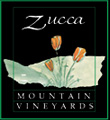What is dry?
I have a number of customers who come into our tasting room tell me that they find some of the wines to be dry. My usual response is “I see, or “oh” because, unless they are referring to our Syrah Port or Tesoro, all of our wines are dry. What I these customers are telling me is that the wines have a drying effect in their mouth. Not wanting to be a wine geek, I don’t go into my lecture of the difference between dryness, a measure of sweetness and astringency, a measure of tannin.
Sweetness is a measure of taste. A dry wine is a wine that has no (or <.5%) residual sugar (RS); an off-dry wine has about 1%, RS; and a sweet wine has >2% RS. Our Syrah Port has about 6% RS.
Astringency is not a measure of taste; it is measure of how the wine feels in the mouth. According to Marian Baldy in the University Wine Course, “…young red wines with high tannin levels are astringent and create a rough sensation: their tannins react with proteins in our saliva and on the surfaces of the cells lining our mouths and on the surfaces of our tongues to dry them out and create a puckery, rough sensation as our now-unlubricated mouth parts chafe against each other. Moderate astringency can nicely offset the richness of a fatty meal, but higher levels make wines unpalatable and call for patience: during bottle aging the astringency will diminish (Baldy, p.25).”
Coffee and tea also have high levels of tannin. That’s why lots of people reduce the tannin effect by adding a bit of milk, that has fat and protein, to their coffee or tea.
____________________________________________________________________
The University Wine Course: A wine appreciation text & self tutorial. (1997). Baldy, M. W. The Wine Appreciation Guild.
Comments
Commenting has been turned off.Recent Posts
-
August 21, 2023
-
August 19, 2015
-
February 5, 2015
-
January 12, 2015
-
January 2, 2015
-
September 22, 2014
-
March 13, 2014
-
April 29, 2013
-
March 13, 2013
-
February 28, 2013
